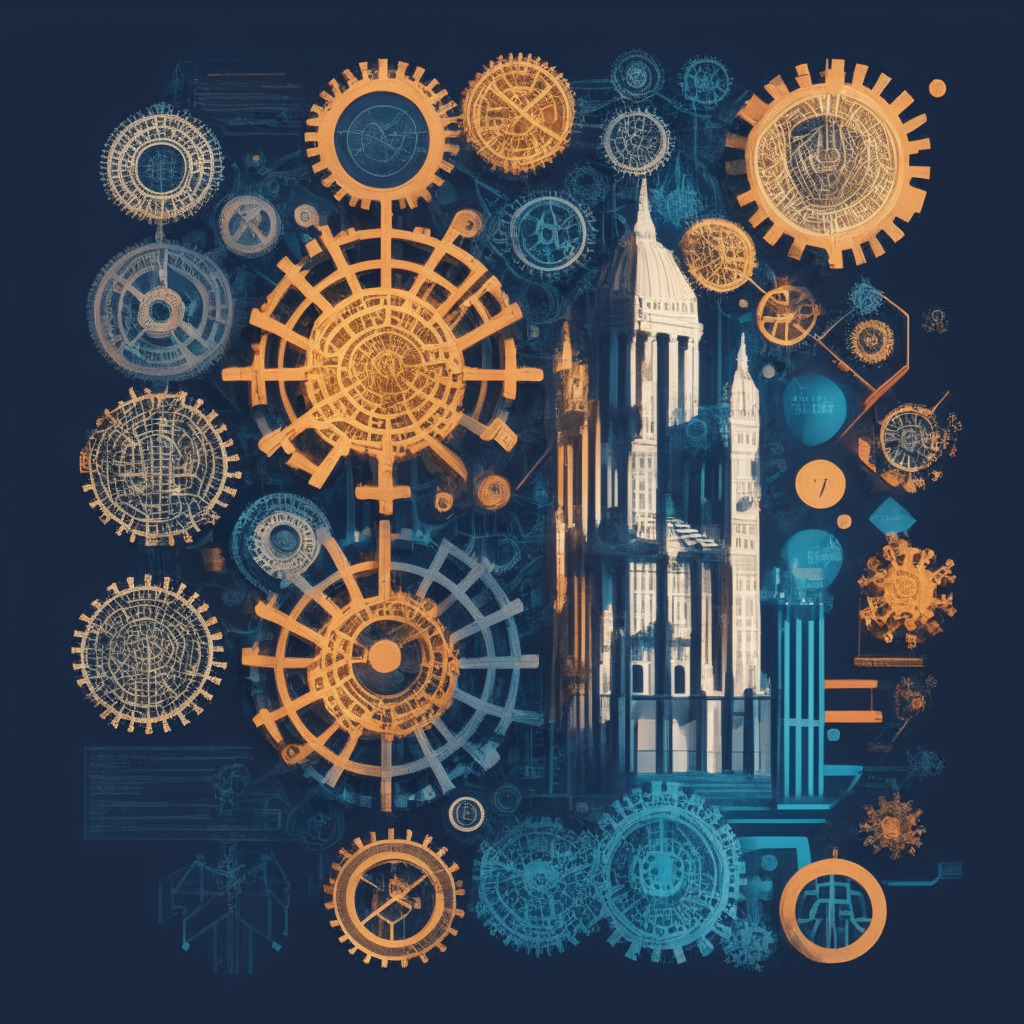“Despite an 80% fall in North Korean crypto heists, forensics firm Chainalysis warns against assuming an improved security landscape. Adaptive hacking techniques, including reliance on Russian-based exchanges for laundering stolen crypto, pose ongoing threats. This situation, potentially feeding North Korea’s missile program, invites international intervention and underscores the need for enhanced cryptocurrency security measures.”
Search Results for: Reliance
Revolutionizing Costa Rica’s Crypto Landscape: Bull Bitcoin, SINPE Movil and the Bitcoin Jungle Alliance
A new partnership among Bull Bitcoin, SINPE Movil, and Bitcoin Jungle has been established, allowing Costa Ricans to convert their local currency, Colones, into Bitcoin without involving international banking services. The partnership could revolutionize Costa Rica’s crypto environment, providing a direct pathway for Bitcoin adoption.
North Korean Cyber Attack on CoinEx: Unraveling the $54 Million Crypto Heist
North Korean cyber operatives are suspected for a recent $54 million security breach on CoinEx exchange involving multiple tokens. CoinEx assures users remaining assets are secured. This incident prompts crypto enthusiasts to re-evaluate security measures and trust in platforms, indirectly showcasing the resilience of blockchain technology.
Ponzi Vs Pyramid Schemes: Deceptive Practices in the Crypto-realm
Cryptocurrency enthusiasts are often seduced by potential quick profits, but this leads to fraudulent schemes like Ponzi and pyramid strategies. These practices rely on incoming investments to pay earlier investors, resulting in a lack of transparency and significant financial losses.
Banana Gun’s BANANA Token Plunge: A Case for Re-evaluating Crypto Auditing Practices
“The newly launched Banana Gun’s token, BANANA, fell by over 99% within three hours due to a bug in the token’s contract. Despite identifying the flaw, the incident raised concerns about the reliability of AI-powered systems for auditing and writing code, prompting a reevaluation of conventional auditing processes. Meanwhile, the rise of bot-enabled trading systems highlights an undercurrent of risk despite their convenience.”
Navigating Privacy: Google’s Privacy Sandbox and the Future of Online Advertising
Google Chrome has unveiled a new ad-curating platform, “Privacy Sandbox,” aimed at eliminating reliance on third-party cookies and fingerprinting. This move, regarded as a significant shift in internet advertising, has sparked mixed reactions over its effectiveness in enhancing user privacy. The balance between targeted advertising and privacy remains a contentious industry issue.
Dogecoin Vs. Cardano Race: Twitter Payments, Innovative Tokens, and Future Implications
“Dogecoin’s current market position against Cardano in the crypto market cap rankings remains despite a recent drop. With DOGE payments on Twitter potentially on the horizon, the crypto community remains hopeful. Launchpad.xyz (LPX), a practical token offering various features and benefits, is gaining recognition in a sea of meme and junk tokens.”
Exploring OpenSea: Transforming Digital Asset Ownership Through NFTs and Facing Challenges
OpenSea, a decentralized marketplace for nonfungible tokens (NFTs), is revolutionizing the digital ownership economy. However, its reliance on cryptocurrency and possible exposure to fraudulent NFT listings are potential drawbacks. Despite these limitations, OpenSea continues to transform our interaction with digital assets.
The Silent Threat: How CBDCs Could Erode Your Financial Freedom
“Central bank digital currencies (CBDCs) offer governments easy access to data collection, surveillance, and asset seizure. Although promoted for benefits such as tax collection and combating financial crime, these programmable money forms may lead to increased transaction censorship and misuse from state control. Counteracting this potential erosion of liberty, cryptocurrencies offer a means to safeguard transactional rights.”
Decentralization Debate: Ethereum’s Layer 2 Solutions Face Security Fears
“Layer 2” solutions like Arbitrum, Optimism, and Coinbase’s Base offer alternatives to the Ethereum network by bundling transactions. But their reliance on a centralized “sequencer” introduces potential bottlenecks and regulatory scrutiny. While there are calls for decentralizing, experts argue that it might compromise security. The future of blockchain depends on efficient decentralization strategies, robust security and fraud prevention.
Grayscale Vs. SEC: The Battle for Spot Bitcoin ETF Approval
Grayscale’s legal team has urged the U.S. Securities Exchange Commission to expedite their Spot Bitcoin ETF proposal, following a court ruling that the SEC unjustly dismissed the proposal. The decision pressures the SEC to reconsider, despite possible appeals. Grayscale argues that continued delays may harm investors, emphasizing the need for a spot Bitcoin ETF.
Ethereum’s Tug of War: Struggling Between Node Centralization and Ultimate Scalability
Ethereum is battling with the issue of node centralization, with much of its network activity verification reliant on centralized services like AWS. Ethereum’s co-founder, Vitalik Buterin, has indicated that true decentralization, achievable through “statelessness” and operability on affordable hardware, is a key part of Ethereum’s long-term roadmap, despite the technical challenges anticipated.
Navigating the AI Wave in Crypto Trading: The Rise of ChatBots and User Trust Issues
“Cryptocurrency exchange Bybit recently introduced ‘TradeGPT’, an artificial intelligence (AI) trading assistant that provides insights using platform market data. The tool utilizes both the ChatGPT language model and Bybit’s ToolsGPT for real-time market analysis and user Q&A assistance, intending to educate users in the complex crypto-sphere.”
Rising Popularity of Bitcoin-Margined Futures: A Double Edged Sword for Crypto Market Stability
“The rising interest in Bitcoin-margined futures contracts brings both excitement and concern, signaling investor confidence but also potential volatility. Leveraged products, they offer traders maximized exposure with potential earnings but also risk major losses and liquidation if Bitcoin’s value drops.”
Digital Rupee and Yes Bank Integration: A Gateway to Mass Adoption or a Breeding Ground for Risks?
“The digital rupee’s integration with Yes Bank’s app UPI extends its reach to millions of merchants in India, potentially driving its mass adoption. However, concerns regarding security, volatility and regulation of cryptocurrencies remain, alongside increasing competition. Despite these challenges, digital currencies showcase resiliency with digital rupee transactions worth $134 million reported within two months.”
Harnessing AI in HR: The Power-Packed Potential and Unseen Pitfalls
“AI is revolutionizing HR, improving efficiency in talent acquisition and retention while predicting potential turnover. However, challenges such as data privacy, algorithmic biases, and reliance on technology remain. The goal is to supplement human expertise, focusing on understanding people’s aspirations and building trust, aided by bespoke AI solutions.”
Accelerating Ethereum Blockchain Verification: StarkWare, Herodotus, and New Challenges Ahead
“StarkWare and Herodotus have launched proprietary technology enabling users to verify data from any point in Ethereum’s blockchain history. This new technology, using on-chain accumulator and STARK proving technology, enhances blockchain access, speeds up data verification and could revolutionize Ethereum-based applications and services.”
Bitcoin Mining: A Hidden Champion in Green Energy Revolution or Grid Nightmare?
Bitcoin miners, against popular belief, are actually evolving to become beneficial players in grid optimization and the ongoing green transition. They leverage underutilized renewable energy sources, partake in grid-flexibilization initiatives and provide a unique capability for swift power usage adjustments. They suggest new strategies for energy-intensive industries to navigate the renewable energy landscape.
Bitcoin Cash Bounces 15% on Grayscale Victory: A Rally Bolstered by Bitcoin or its own Merits?
Following Grayscale’s court victory against the SEC, Bitcoin Cash’s price surged by 15% in 24 hours. The news might prompt further cryptocurrency exchange-traded funds, including a potential BCH ETF, promoting growth in other Bitcoin-related tokens like Bitcoin SV and Stacks.
China’s Giant Leap: JD.com’s Digital Yuan Revolution for Supply Chain Financing
“JD.com and ICBC are developing a digital yuan using smart contract technology for supply chain financing, enhancing verification, risk identification, and credit guarantees for SMEs. The solution, fostering trust among financial institutions, aims for wider digital yuan acceptance and marks a significant moment in streamlining financial processes.”
Circle’s Stablecoin USDC Set to Launch on the Base Network: A Leap Forward or a Leap of Faith?
Circle’s CEO Jeremy Allaire recently announced a significant shift for the company’s U.S. dollar-pegged stablecoin, USDC, which will now launch natively on the Base network. This aims to gradually reduce the need for a bridged coin backed by the Ethereum variant. Despite the development, underlying trust issues remain, emphasising the stability of the Base network and potential issues resulting from reliance on bridged tokens.
India’s Blockchain Future: Ambani’s Gamble on Blockchain and CBDCs – Opportunities and Pitfalls
Mukesh Ambani’s Jio Financial Services (JFS) is promoting blockchain adoption and exploring central bank digital currencies (CBDCs) to aid digital inclusivity and financial growth in India. JFS aims to deliver blockchain-based products while ensuring utmost security, regulatory compliance, and customer data protection.
Decentralization Versus Sanctioned Russian Banks: The P2P Dilemma in Crypto Exchanges
Crypto exchanges including OKX and Bybit have delisted Russian banks Tinkoff and Sberbank, due to Western sanctions following the Ukraine invasion. Despite this, the decentralized nature of P2P transactions makes complete enforcement challenging. The delistings highlight the growing reliance on cryptocurrencies amid Russia’s economic instability due to these sanctions.
Navigating the Regulatory Waters: An In-Depth Look at Crypto Regulations and Their Impact
Former FTX CEO, Sam Bankman-Fried, has been given unique access to his legal team amid a controversial criminal case. The move reflects potentially changing attitudes towards the crypto sector. Despite increasing regulation scrutiny, some argue this could shape a more secure and robust crypto ecosystem.
Oman’s Digital Leap: Unveiling Huge Digital Mining Facility in Pursuit of Blockchain Dominance
Oman has launched a $150 million digital asset mining facility, marking a major step in its drive to reduce economic dependence on oil. With 2000 cutting-edge machines, the facility bolsters Oman’s position in digital asset mining and contributes to an overall sector investment of $740 million. As part of this digital transformation, educational programs and business registration directives are also being rolled out.
Future of Gold-Backed BRICS Currency: A Dream or Reality? Debating Pros, Cons, and Bitcoin Effect
“Macroeconomist Lyn Alden argues against the feasibility of a forthcoming gold-backed BRICS currency, citing it a tough challenge for BRICS members. Doubts are raised about the model backing a fractional-reserve banking system with gold.”
Emergence of Tech Adaptability: Digital Asset Miners Venturing into AI Services
“Digital asset miners are venturing into artificial intelligence, aiming to boost earnings and decrease dependency on conventional cryptocurrency operations. Notably, Bitcoin and Ethereum miners are driving this switch, while some miners continue mining other Proof-of-Work assets. Mining companies are rebranding to echo this trend, finding high-performance computing services for AI firms potentially more profitable than Bitcoin mining.”
Imperial College London and FluidAI Tackle Crypto Liquidity Challenges: A Leap Forward or a Risky Venture?
Imperial College London’s AI lab is collaborating with AI startup FluidAI to address liquidity aggregation, a key issue in the crypto space. Despite scepticism, FluidAI CEO, Ahmed Ismail, believes AI could potentially enhance the “tokenised market” by overcoming latency in bid/ask prices, improving liquidity. However, over-reliance on AI prediction models could risk market distortions.
Crypto Markets Calm as Storm Brews Behind the Scenes: Failures, Diversification, and Anticipated Swings
Major cryptocurrencies showed a stable trend, despite turbulence like the slump of SHIB partially due to its unsuccessful Ethereum layer 2 network, Shibarium. Ethereum co-founder, Vitalik Buterin, transferred $1 million worth of cryptocurrency whilst facing a market downturn. This turbulent environment led to a strategic shift for bitcoin miners into new business areas.
Exploring the New Horizons: How Crypto Miners Diversify Revenue Streams into AI Market
“Bitcoin and Ether miners are branching into new business areas including high performance computing services for the artificial intelligence industry, seeking to diversify revenue and reduce crypto reliance. This follows the Ethereum blockchain Merge, leaving a surplus of GPUs on the secondary market, used for gaming, rendering services and mining other cryptocurrencies.”
Exploring the OpenAI Code Interpreter: Bridging the Gap or Breeding Complacency?
OpenAI’s code interpreter, developed through reinforcement learning from human feedback, bridges the gap between human language and computer code. Understanding coding practices across languages, it not only grasps code functions, but also identifies bugs, and suggests code improvements. Despite its versatility, it’s crucial to recognise its limitations and reliance on training data.
OpenSea’s Optional Creator Fees: A Bold Shift or Risky Gambit?
OpenSea, a leading non-fungible token (NFT) marketplace, will make creator fees optional for new collections and retire its Operator Filter, an enforcement tool for creator royalties. The decision, driven by the lack of community support, aims to give users full ownership and control of their NFTs.































